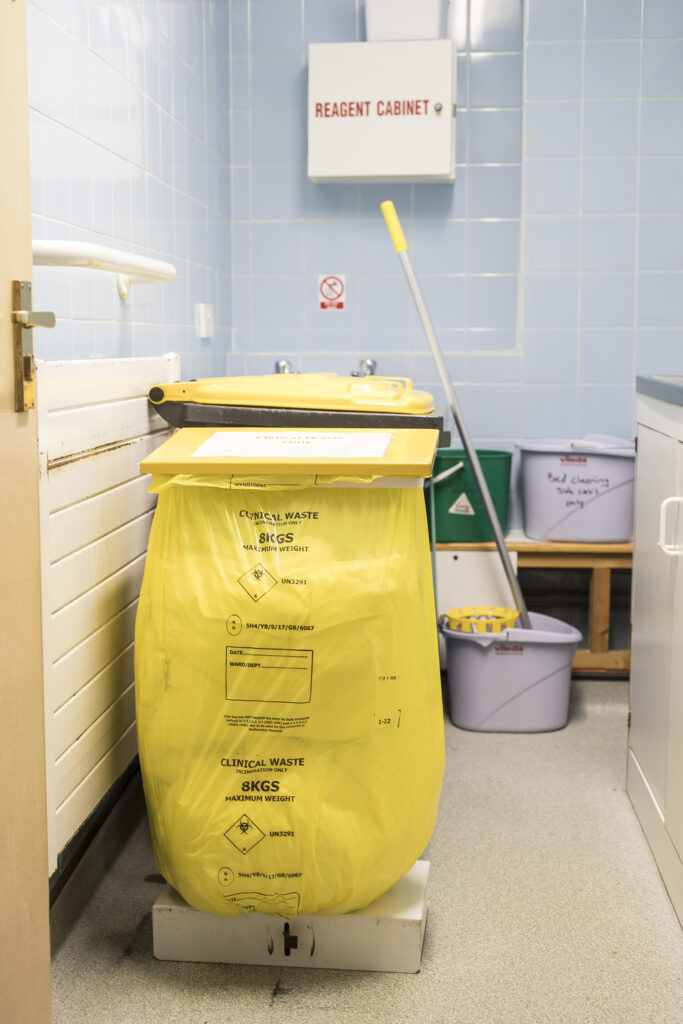Waste is inevitable and often unavoidable, and while many try to reduce their waste consumption, it’ also important to choose the right bag for your waste. That’s where the magic (and common sense) happens. Whether it is organic waste or waste created from a medical setting like hospitals, each waste type will have a bag which is seen as the ‘best option’ for collection and containment for disposal.
So, which bag is best for your waste type? Let’s break it down, bag by bag.

General Waste (Non-Recyclable) – Black Bags
General waste, also known as residual waste or non-recyclable waste, is the type of rubbish that cannot be composted or recycled. It’s what’s left over after you’ve separated your recyclables, food waste, and garden waste. Examples could include Food-contaminated packaging, pet waste, ash, soiled recyclables and nappies, all of which can not be recycled or receive alternative treatment and therefore will end up being sent to Energy From Waste (EFW) or landfill.
For this waste, we would recommend a black refuse, rubble or compactor sack.
The dark colour clearly signals “non-recyclable waste,” helping prevent contamination in recycling streams. It simplifies collection for waste handlers—no need to open and check what’s inside and many local authorities and commercial waste contractors require or expect general waste to be presented in black sacks for sorting and safety reasons.
Recycling Waste (Paper, Plastic, Metal, Glass, etc) – Natural or Coloured Bags
Recyclable waste, or sometimes known as dry mixed recycling, is any waste item that can be mechanically or chemically broken down and reused to make new materials or packaging. Typically these are items such as PET and HDPE plastics, paper and cardboard, aluminum containers and glass bottles. The key to great recycling is ensuring they are clean, and correctly segregated, both of these will help avoid contamination and increase recycling success rates.
For sorted recyclables like cans, paper, and plastics, clear or colour-coded recycling bags are your friends. Often, businesses or local authorities may assign a specific colour to a certain recyclable waste type, based on their waste stream and end-of-life solution. For example, blue bags are used for cards and paper, red for plastics, and pink for glass. Whether the bags are clear or coloured, the bags are often translucent to make the contents visible so any contamination can be easily identified.
Why these bags work best:
- Transparency helps recycling workers spot contaminants fast.
- Printed logos or colours (like blue for paper, pink for bottles) help prevent contamination.
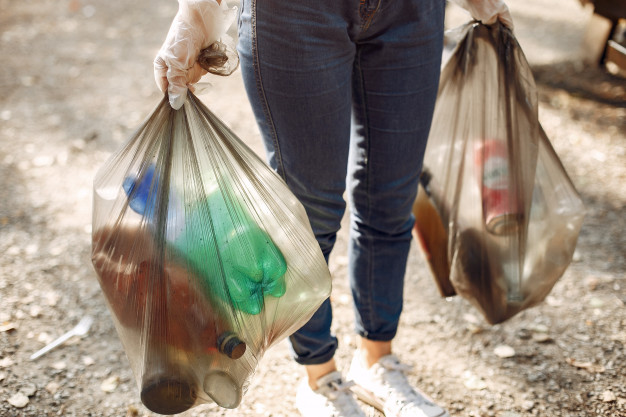
Clinical Waste – Orange, Yellow or Tiger Striped
Clinical waste bags are specially designed to handle waste generated from healthcare settings, where the contents can be infectious, hazardous, or sensitive in nature. Unlike general or recyclable waste, clinical waste must be segregated, labelled, and treated differently to protect public health and the environment. Each waste type must be captured in a different colour bag, based on their end-of-life treatments. So, where to start?
Tiger Striped Clinical Waste Bags – Offensive/Hygiene Waste (Non-Infectious)
Yellow Bags with Black Stripe (Tiger Bags) – for offensive waste (inc. sanitary / nappy waste).
For waste arising from the treatment of non-infectious patients, possibly containing bodily fluids, for example:
- PPE (gloves, masks aprons)
- Wipes, dressings, plasters and bandages – non infectious
- Incontinence waste – non infectious
- Soiled sanitary towels and tampons from public and work based female toilets
- Nappies – from adult or baby changing areas and nurseries.
DISPOSAL: This waste may be sent to landfill, or EfW incineration, or AT.
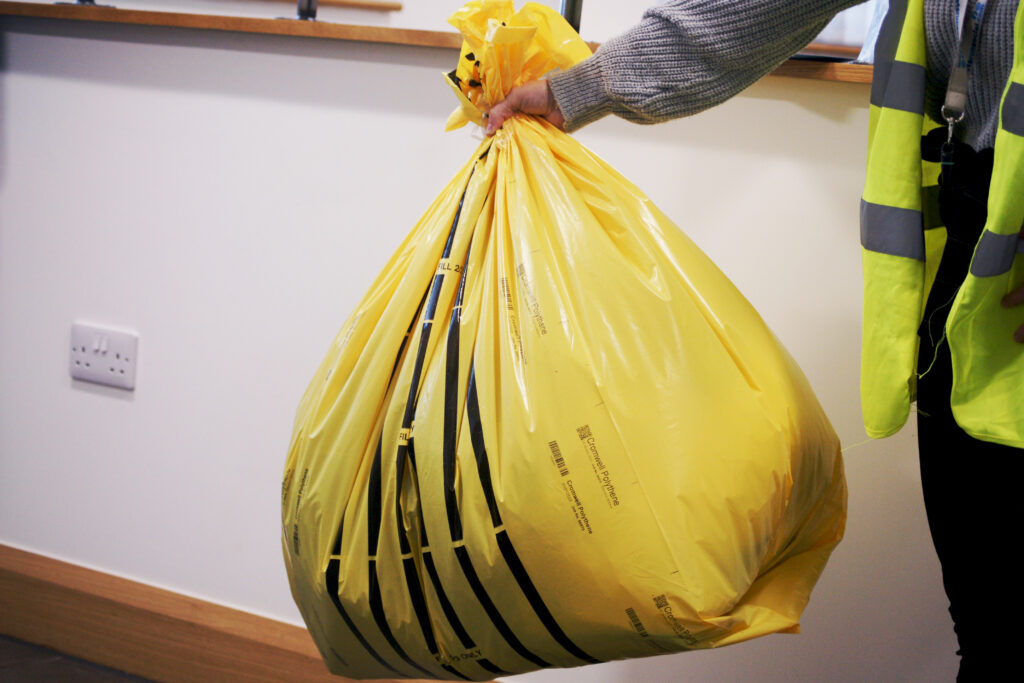
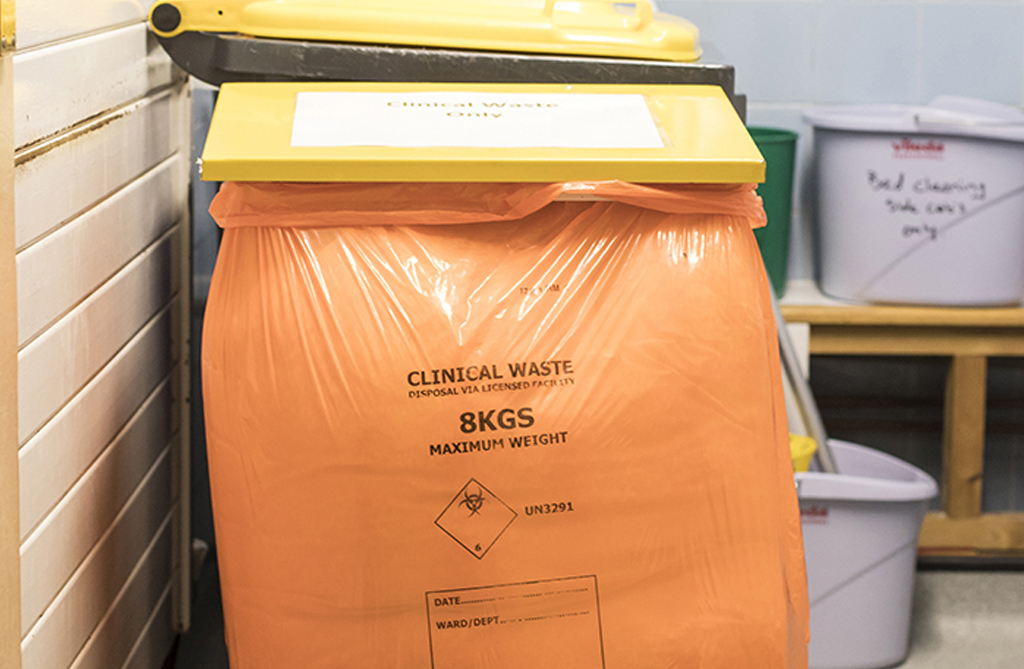
Orange Clinical Waste Bags – Infectious Waste for Alternative Treatment
Orange Bags – for Infectious soft Clinical Waste, including dressings, swabs, wipes, gloves, gowns etc.
This is waste arising from the treatment of infectious patients, or to those suspected of having an infection, possibly contaminated with bodily fluids. NOT containing medicine contaminated waste. It encompasses materials contaminated with pathogens capable of transmitting diseases to humans or animals. For example:
- PPE (gloves, masks aprons)
- Wipes, dressings, plasters and bandages
- Incontinence waste
- Empty saline or glucose IV bags, and tubing (no active medicines added).
DISPOSAL: Alternative Treatment
PRODUCED: In any human or animal healthcare location.
Yellow Clinical Waste Bags – Infectious Waste for Incineration
Yellow Bags – for infectious waste that is contaminated with medicines or chemicals
This is waste that has been used in the treatment of infectious patients, those suspected of having an infection and are contaminated with medicines or chemicals. For example:
- PPE (gloves, masks aprons)
- Wipes, dressings, plasters and bandages
- Incontinence waste
- Empty saline or glucose IV bags, and tubing (no active medicines added)
- IV Bags, lines and tubing that have had medicine added
- Chemically contaminated waste.
DISPOSAL: This waste must be sent for high-temperature incineration.
PRODUCED: In any human or animal healthcare location.
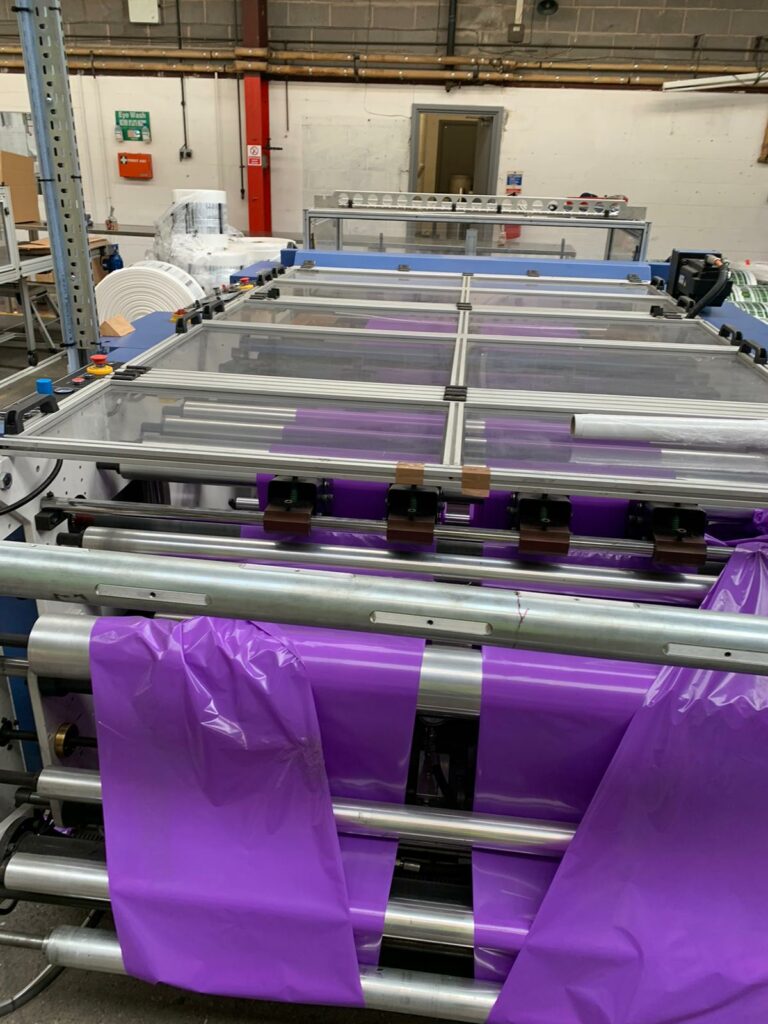
Purple Waste Bags – Infectious Waste for Alternative Treatment
Cytotoxic waste bags are purple and are used to store clinical waste that has been contaminated with cytotoxic or cytostatic medicines. The colour helps to distinguish cytotoxic waste from other types of clinical waste and to avoid cross-contamination.
- Drugs, antibiotics, and antiviral medications
- Incontinence waste
- PPE (gloves, masks aprons)
- Drug administration equipment (e.g. swabs, IV drip sets)
- Cytotoxic contaminated waste.
DISPOSAL: This waste must be sent for high temperature incineration.
PRODUCED: In any human or animal healthcare location.
Food / Organic Waste – Compostable or Natural Caddy Liners
As household recycling has become simpler and more widely adopted, there’s been a noticeable rise in the volume of food waste collected separately. This shift reflects growing awareness and the expansion of food waste collection schemes, helping to divert organic waste from incineration or landfill and turn it into something far more useful—like compost or renewable energy.
Compostable and Polythene Caddy Liners, which should you chose? Well that all depends on your end of life treatment.
Green Compostable – If your food waste will be sent to a composting facility, then an EN13432 green compostable liner would be the best fit. Made from plant-based materials like corn starch, ensuring they break down into biomass, CO₂ and water with no harmful residue
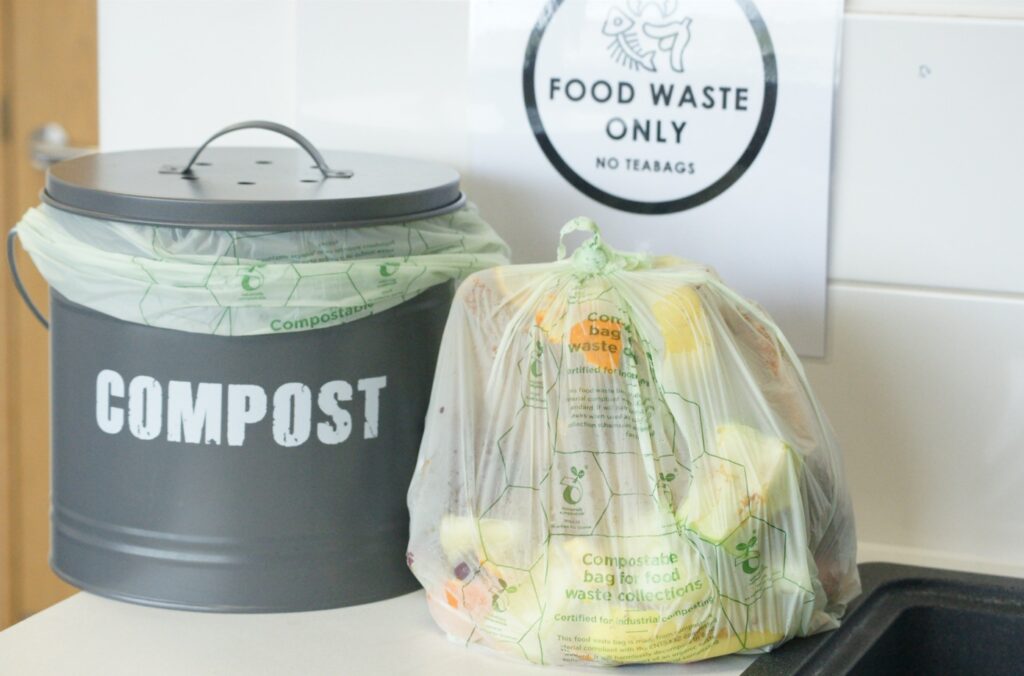
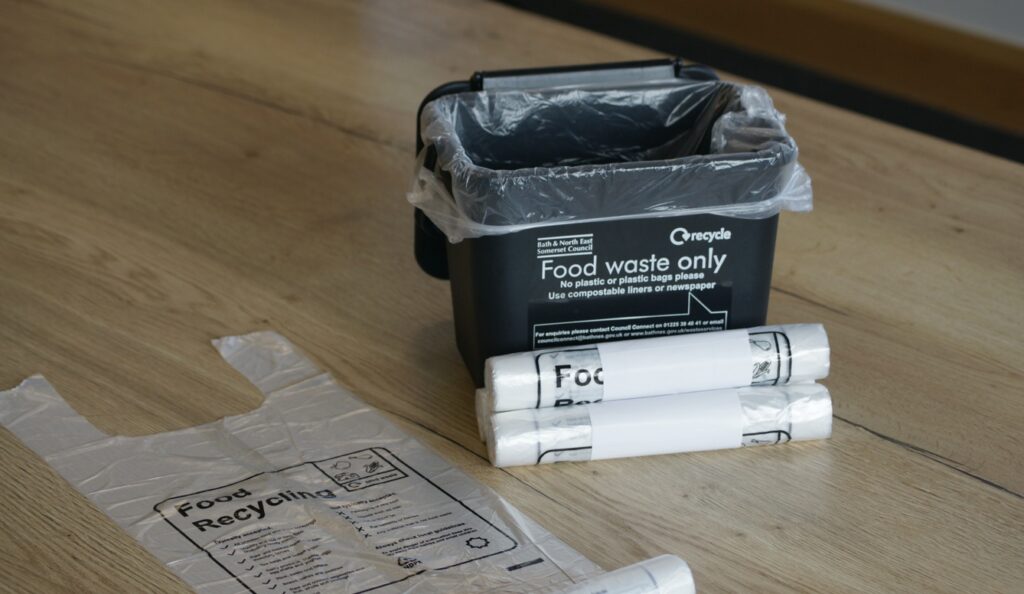
Natural Caddy Liners – For instances where the waste will be sent for anaerobic digestion (not composting), a clear polythene liner will be more appropriate. The transparency could help detect any contamination, whilst still helping to successfully capture and contain the waste in a clean and hygienic way. Polythene bags are also preferred if the waste will get ‘debagged’ when it reaches the facility.
Cromwell Can Help
Choosing the right bag for your waste type isn’t just a matter of convenience—it’s essential for effective waste management, hygiene, and sustainability. Whether you’re dealing with food scraps, recyclables, clinical waste, or everyday rubbish, matching waste to the correct bag ensures cleaner handling, smoother collections, and a lower environmental impact.
At Cromwell Polythene, we’re here to help you make the best choice; confidently, clearly, and sustainably. Want to know more? Get in touch with our team for tailored advice or to explore our full product range. And for a handy reference, don’t forget to download our free guide to waste bag selection; your go-to resource for smarter, cleaner waste solutions.
